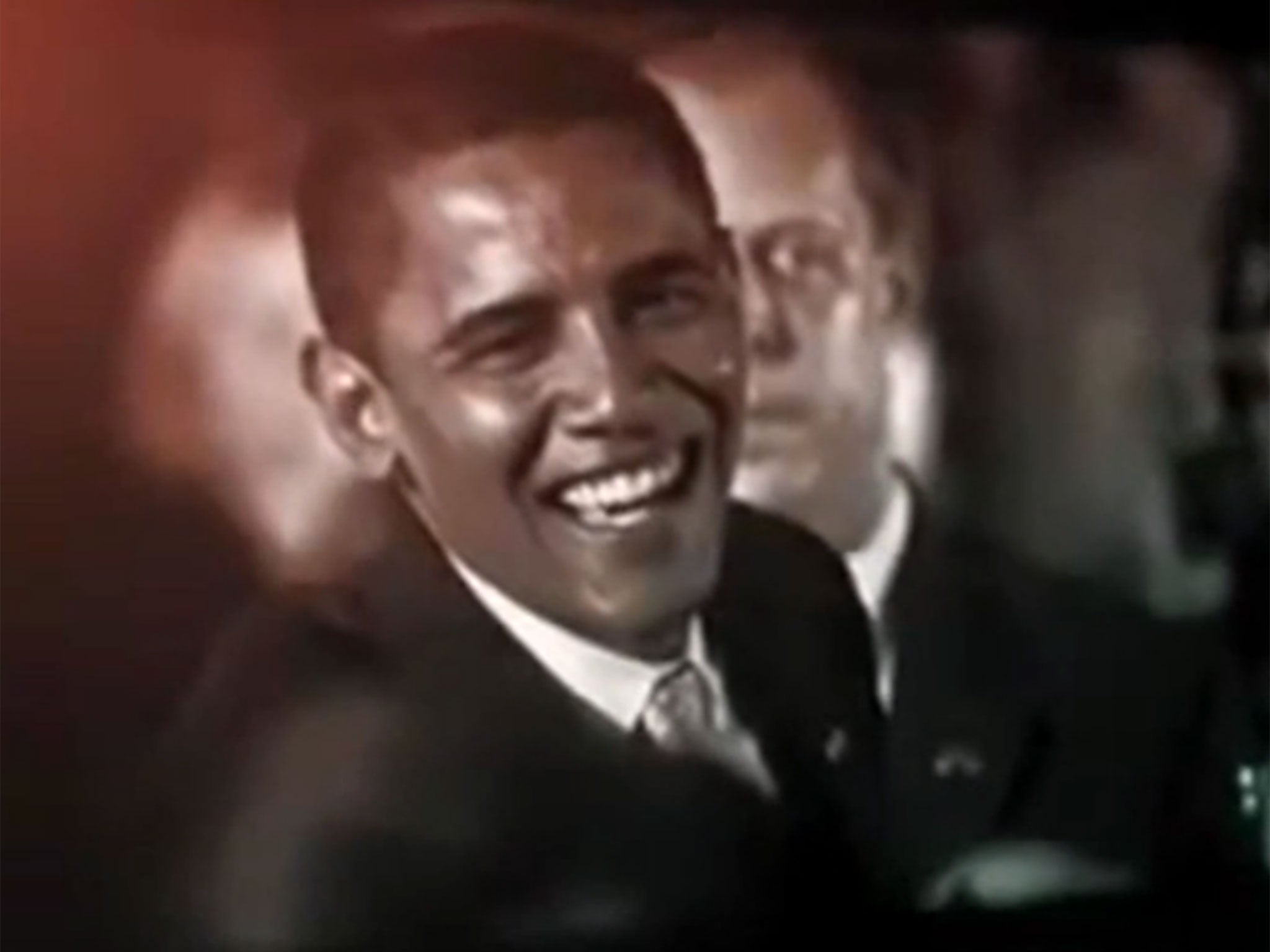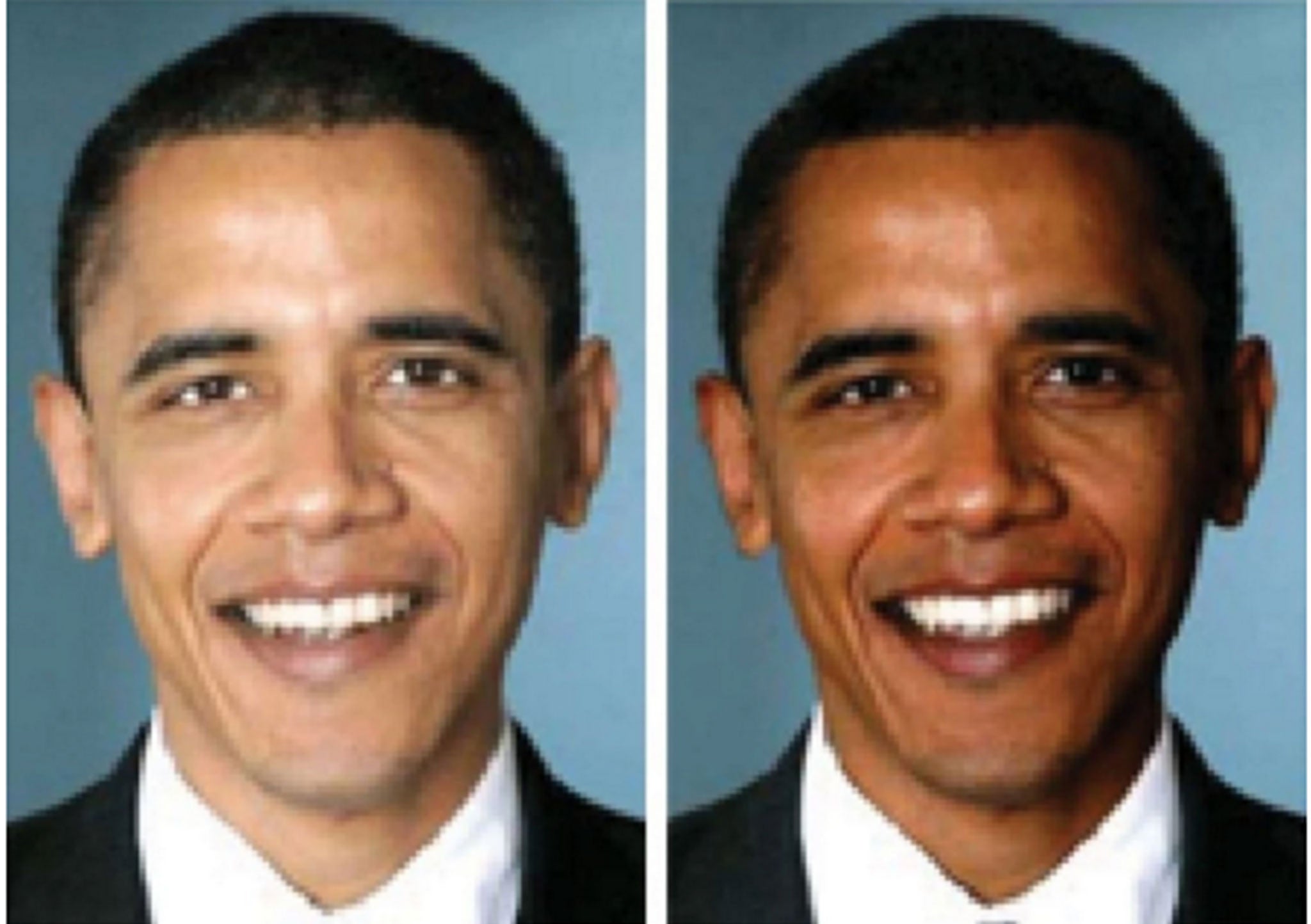Barack Obama was made to look 'blacker' in Republican Party campaign ads
Finding reinforces charges that some Republican politicians seek to win votes by implying support for racist views and ethnic hierarchies

Your support helps us to tell the story
This election is still a dead heat, according to most polls. In a fight with such wafer-thin margins, we need reporters on the ground talking to the people Trump and Harris are courting. Your support allows us to keep sending journalists to the story.
The Independent is trusted by 27 million Americans from across the entire political spectrum every month. Unlike many other quality news outlets, we choose not to lock you out of our reporting and analysis with paywalls. But quality journalism must still be paid for.
Help us keep bring these critical stories to light. Your support makes all the difference.
A new study shows that negative ads targeting President Obama in 2008 depicted him with very dark skin, and that these images would have appealed to some viewers’ racial biases.
The finding reinforces charges that some Republican politicians seek to win votes by implying support for racist views and ethnic hierarchies, without voicing those prejudices explicitly. The purported tactic is often called “dog-whistle politics” — just as only canines can hear a dog whistle, only prejudiced voters are aware of the racist connotations of a politician’s statement, according to the theory.
That debate has been prominent in the 2016 campaign, primarily targeting Donald Trump, but it has existed in almost every recent presidential election. To hear their opponents tell it, when Republican politicians say they oppose a generous welfare system, they really mean black beneficiaries are lazy. If they endorse strict immigration enforcement, they really mean that Latinos are criminals, critics say.
A study published online this month in Public Opinion Quarterly provides new evidence that one GOP campaign — intentionally or not — has aired advertisements that exacerbate viewers’ racial biases.
Analyzing 126 advertisements from the presidential campaign in 2008, the authors first digitally measured the darkness of the two nominees’ skin in each spot, then sorted the ads into categories based on themes. President Obama and his opponent, Senator John McCain (respresentatiove of Arizona), looked very different in various advertisements depending on how the footage was edited and produced.
That was particularly the case in negative advertisements, in which each campaign manipulated the images of its opponent to shadow or wash out his face for dramatic effect.
Interestingly, though, when McCain's campaign aired spots that connected Obama with alleged criminal activity by liberal groups, the producers almost always used images that made Obama's skin appear very dark. You can watch one of those spots here.
Eighty-six per cent of these ads contained an image of the president in which the his skin tone was in the darkest quartile of all ads studied.
Likewise, as the election approached, images of Obama in spots aired by McCain's campaign became gradually darker.
Images of McCain campaign's own candidate, meanwhile, became somewhat lighter.

Whether this was a conscious strategy on the part of McCain’s campaign is impossible to say. The Washington Post contacted the Republican National Committee and McCain's Senate office. They did not immediately respond to requests for comment.
Yet a large body of evidence shows that racial prejudices are stronger against African Americans with darker skin. For example, jurors are more likely to sentence to death black defendants with stereotypically African facial features, even when accounting for the severity of the crime.
The authors of this study — Solomon Messing of the Pew Research Center; Maria Jabon, a software engineer who works for LinkedIn; and Ethan Plaut, a postdoctoral fellow at Stanford University — confirmed that darker images of Obama did indeed affect the way viewers perceived him. (Messing conducted the research at Stanford before joining Pew.)
The researchers showed subjects manipulated images of Obama and then asked them to play a game resembling a crossword puzzle. The subjects had to fill in blanks, such as “C R _ _ _.” One respondent might write “C R O W D,” while another might write “C R I M E.” Given the letters “L A _ _,” a respondent could write “L A Z Y.”
Those who saw the image of Obama with light skin gave that word or another anti-black stereotype as a response 33 per cent of the time. Among those who saw the darkened image, the figure was 45 percent, showing that they were more likely to have those negative stereotypes on their minds after seeing the photograph.
Copyright: Washington Post
Subscribe to Independent Premium to bookmark this article
Want to bookmark your favourite articles and stories to read or reference later? Start your Independent Premium subscription today.
Join our commenting forum
Join thought-provoking conversations, follow other Independent readers and see their replies
Comments